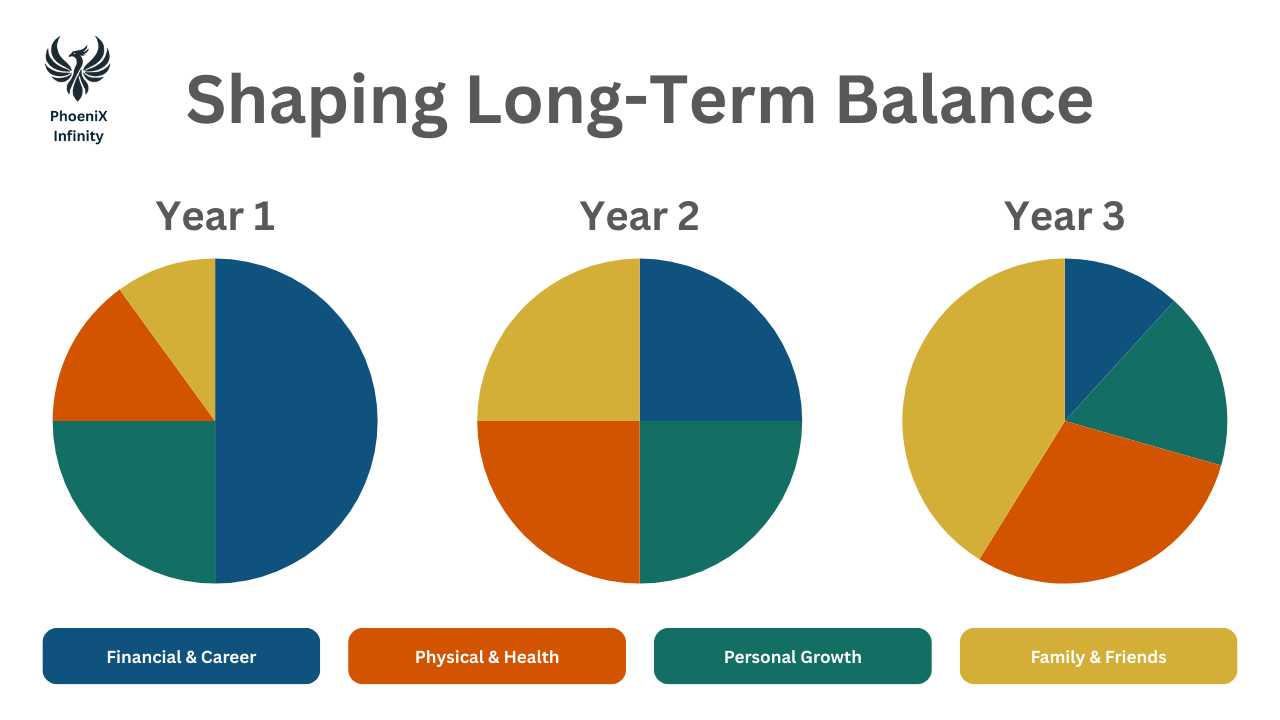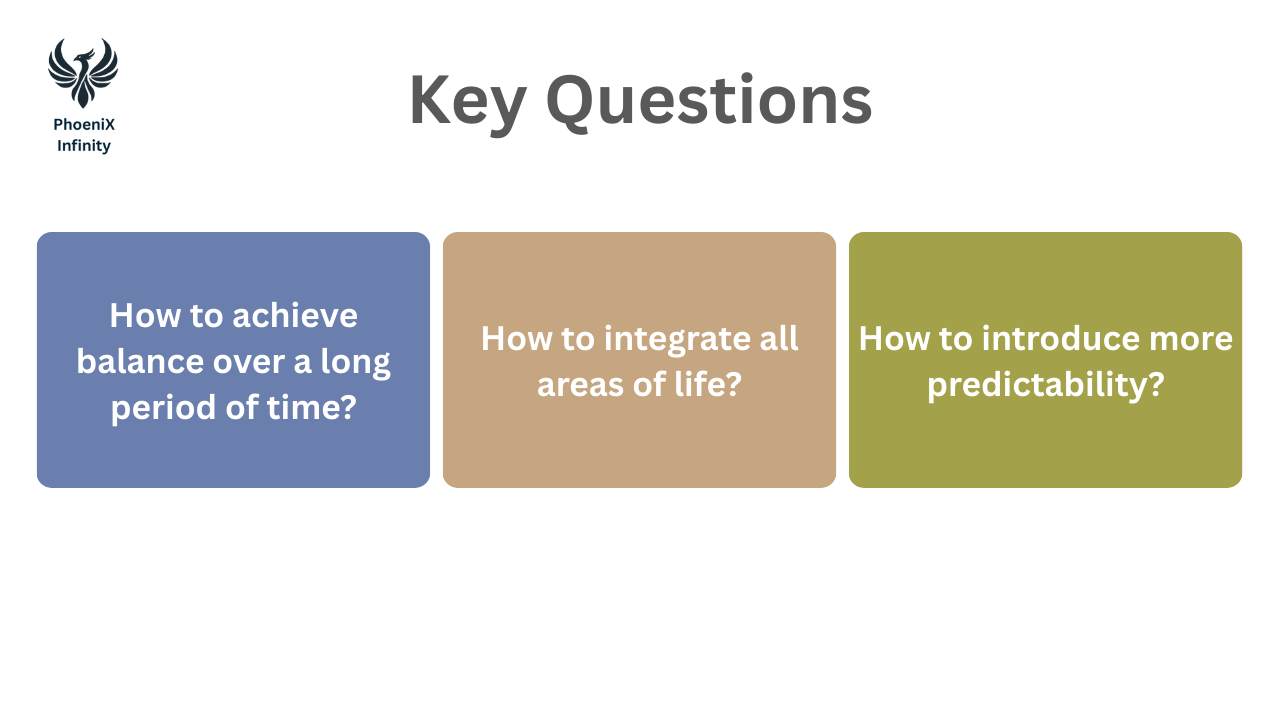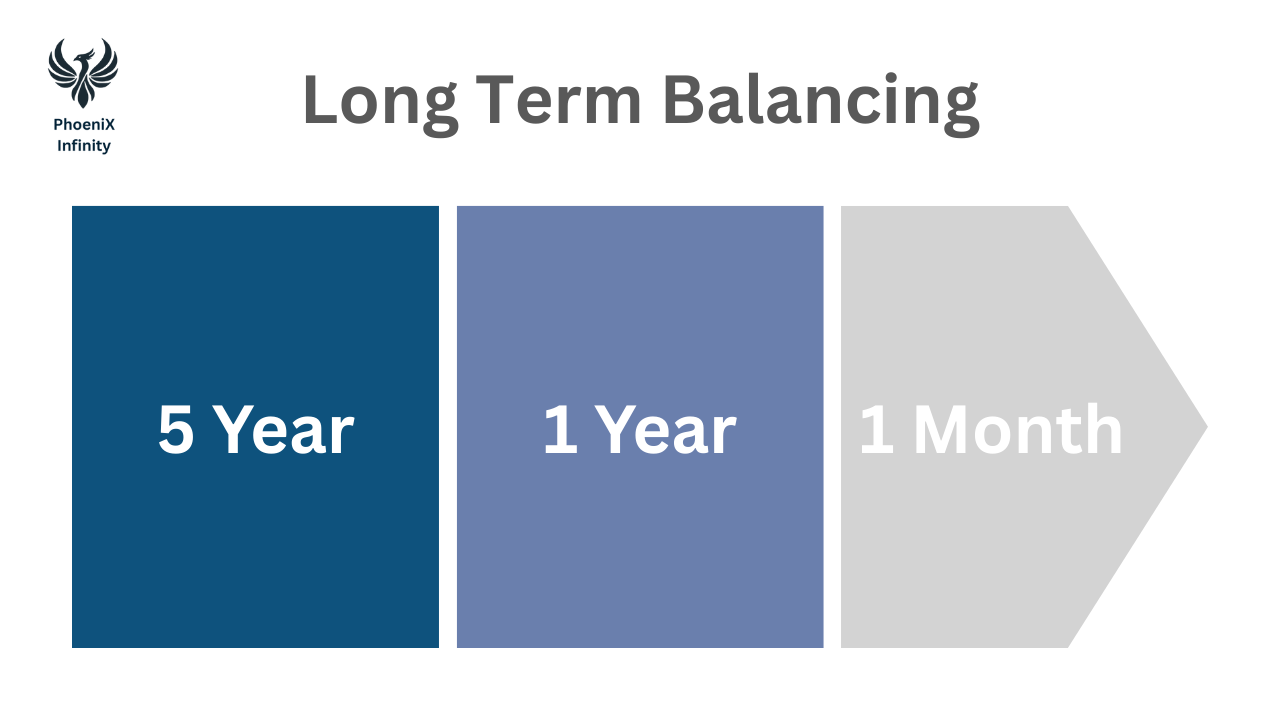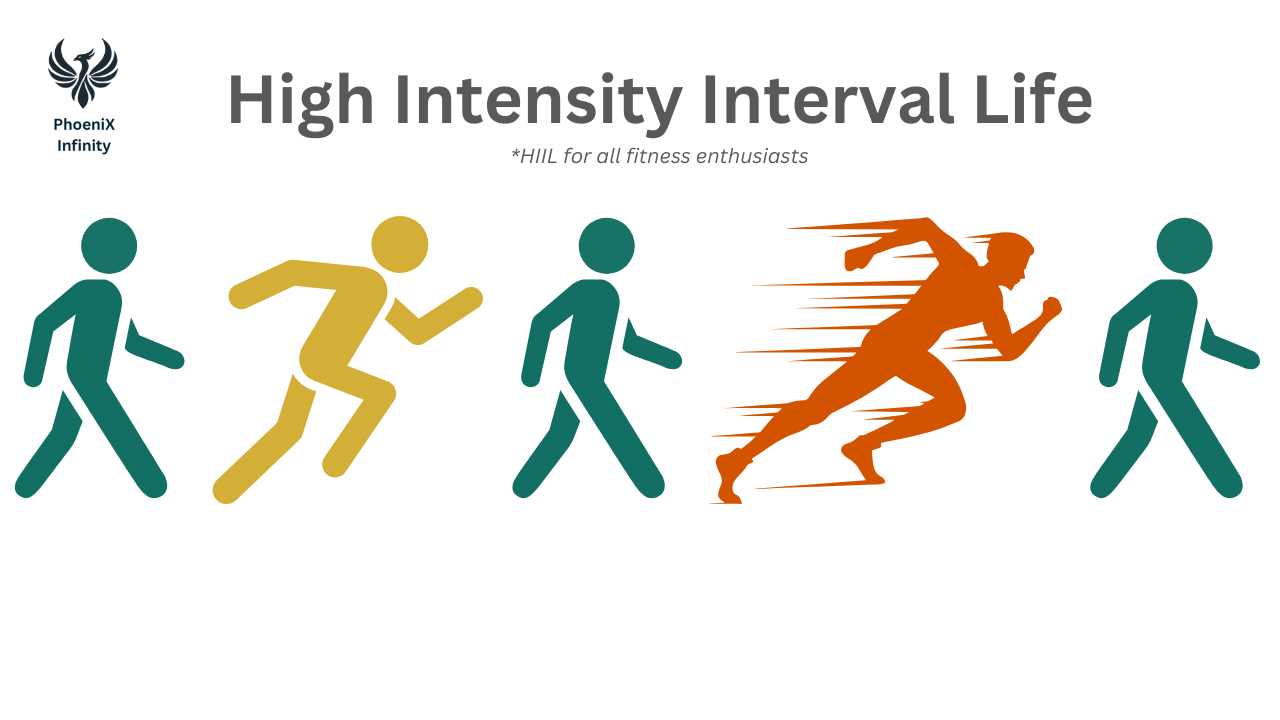Work-Life Balance for Business Professionals
Jun 11, 2025
Are You Really Out of Balance, or Just Living Without a Strategy?
Most of us grew up believing balance meant equal parts: 8 hours of work, 8 hours for family and fun, and 8 hours of sleep.
Neat, tidy, and fair.
But anyone who has built a meaningful career in business knows that the formula breaks down fast. Deadlines don’t wait. Strategic meetings creep into evenings. Emails pour in after dinner. And ambition? It whispers that staying late might finally get you that opportunity. Soon, the balance breaks down under the heavy load of responsibility, expectations, and growth.
In reality: It’s not the hours that break us. It’s the lack of clarity, control, and conscious design.
Rethink Balance: The Power of Work-Life Integration
Let’s set the record straight. Balance isn’t about splitting your day into rigid thirds.
Balance is about long-term intentionality.
In business, we don’t clock in and clock out. We solve problems, lead teams, shape strategies, and put out fires. Some days demand more. Some seasons are sprints. Your value grows with your contribution, and some seasons of life will demand more from your work than others. That’s okay. But burning out isn’t the badge of honor we once thought it was.
The mistake is thinking you must sacrifice everything else in the process.
Work-life integration is a more powerful, more realistic model. Instead of building walls between your roles, you strategically blend them. Work and life aren’t rivals. They’re interconnected. And when approached strategically, they can amplify each other.
You align your ambition with your values. You plan your time around what truly matters. And you do it all based on the evolving seasons of your life, not some imaginary daily balance sheet.
Let’s be honest: the myth of perfect daily balance is outdated. The new game is long-term alignment.
The Four Life Domains You Must Integrate
Your life isn’t built in silos. It’s a system. And that system breaks if you neglect any of these four areas:
- Financial & Career
- Family & Friends
- Physical & Health
- Personal Growth
These aren't isolated silos. They’re deeply connected.
- Let your health slip, and your career suffers.
- Neglect relationships, and fulfillment tanks.
- Ignore purpose, and burnout follows.
Integration means acknowledging that every area matters, just not all at the same time and not always equally.
True balance isn’t symmetry every day. It’s sustaining meaningful progress across these domains over time.

Why Balance Fails – And When It Matters Most
When we say “I need more work-life balance,” what we usually mean is:
- “I need time for my family, friends, and hobbies.”
- “I want more predictability and fewer last-minute emergencies.”
But here’s what we often forget:
We don’t feel unbalanced when we choose to work late for a meaningful project. We feel unbalanced when it happens to us. Without a plan, without a purpose.
So the real pain isn’t working more. It’s the lack of control and clarity.
Integration fixes this.
It’s not about achieving perfect daily balance. It’s about:
- Designing your time with intention.
- Allowing life to flow in seasons.
- Making conscious trade-offs in line with your long-term goals.
That’s the difference between burnout and purpose.

Build Balance Over Time, Not in a Day
Let’s redefine balance: not as daily equality but as harmony across months and years.
Think of your life in macro and micro cycles.
Over 5 Years:
Each year can have a dominant focus.
- Year 1: Health recovery
- Year 2: Career acceleration
- Year 3: Family foundation
- Year 4: Financial growth
- Year 5: Creative/personal exploration
Ask yourself: Is the next 5-year stretch of your life balanced across domains? If not, you’re heading for burnout, even if this year feels manageable.
Within a Year:
Even in a career-focused year, you need anchors. Moments when you rebalance.
- Schedule quarterly relationship-focused weekends.
- Block 2–3 lighter months for health or rest.
- Alternate high-focus quarters with renewal periods.
Within a Month or Week:
- Build one evening a week that’s sacred. No work, no phone.
- Pick 1–2 weekends a month that are completely off-grid.
- Plan 2-hour micro-sabbaticals where your mind truly resets.
If you want true balance, you don’t need boundaries. You need a life strategy.

Integrating, Not Compartmentalizing Your Life
Now let’s talk about the elephant in the room.
What if you’re in an intense industry? Startups, consulting, investment banking, legal – not exactly famous for 40-hour weeks.
Then the rules shift.
- Short-term sprints are fine – as long as they’re planned and compensated for with recovery.
- If the pattern becomes permanent, it’s not strategy. It’s survival.
Integration starts with honesty: Do you want this lifestyle long-term? If not, when does it change?
Here’s the hard reality: You can’t rebalance what you haven’t first defined.
Integration begins with a life strategy. Your personal “portfolio” of growth.
Start here:
- Clarify your long-term vision. What does a great life look like to you? First, in each area of your life, and then overall.
- Set annual goals across each domain. What would progress mean each year?
- Identify your “focus area” each year. What’s the one domain that deserves the majority of your energy every year?
- Rotate your focus intentionally. Let each part of your life take the lead at different times.
It’s okay for work to dominate in a high-growth year. But if work leads every year, you’re not integrated; you’re imprisoned.

Creating More Predictability in a Demanding Career
Here’s what derails us the most: ad hoc everything.
Last-minute meetings. Calls at 10 PM. Fire drills that weren’t emergencies.
Unpredictability isn’t always the enemy. But chaos caused by unclear boundaries? That’s burnout bait.
To regain balance, you need predictability, and that comes from clear strategies.
- Block sacred time. Personal commitments are real, so protect them.
- Communicate clearly. Let your team and manager know your boundaries.
- Plan for high-demand periods. Business comes in cycles. Anticipate and manage accordingly. Communicate during calm seasons so people respect your limits during busy ones. Predictability is a team sport.
- Design your “off-switch.” Have a default way to decompress each day. Not just scrolling on the couch; something restorative.
Predictability isn’t about controlling every minute. It’s about building a container strong enough to hold your best life.
The Truth About Burnout (It’s Not Just About Hours)
Let’s clarify something important:
Working long hours isn’t what causes burnout. Working long hours without meaning, clarity, or boundaries does.
Yes, pushing 12-hour days, week after week, without rest will break you. But so will:
- Toxic team culture.
- Lack of recognition.
- Constant ambiguity.
- Feeling like your work doesn’t matter.
This article can help you fix one cause: lack of integration. But if your environment is toxic or your work isn’t aligned with your values or purpose, those need different tools and strategies. (And I’ll cover them in separate articles.)

How to Start Integrating Today
Let’s make this real. Here’s your 6-step action plan to start building and integrating your life:
1. Audit Your Current Life Balance
Which issue is showing up the most?
- Lack of time for non-work areas?
- Unpredictability and chaos?
- Long-term imbalance?
2. Define Your Life Strategy
Clarify your:
- Vision for each life domain
- Long-term goals
- Focus area for this year.
- Core values to guide trade-offs.
3. Design a 5-Year Integration Plan
Assign a core focus to each year. Ensure that, across the five years, no one domain dominates.
4. Design Micro-Balance Moments
Within each week/month:
- Plan connection time.
- Block personal resets.
- Protect sleep and energy anchors.
Examples:
- Monday: work sprint.
- Tuesday: gym and dinner with the partner.
- Friday: light work + personal project.
These are your rebalancing moments.
5. Create Predictability Routines
- Share your priorities with your team.
- Set default “unavailable” blocks.
- Use proactive planning for busy cycles.
Write a personal boundary statement. For example: “I don’t do calls after 6 PM unless pre-agreed. Or “Every Friday I finish at 3 PM." Then stick to it. Model what you expect.
6. Watch for Other Burnout Roots
If you're doing all the above and still struggling:
- Reassess your role, team, or leadership.
- Evaluate your boundaries.
- Check in with your mental and emotional well-being.
It’s Not About Hours, It’s About Ownership
Work-life balance isn’t a perk. It’s a skill. A strategy. A decision.
You don’t need a perfectly divided day. You need a clearly designed life.
You don’t have to be perfect. But you do have to be intentional.
Work-life integration isn’t about compromise. It’s about choosing what matters, when it matters most, and making room for the rest.
Because one day, you’ll look back and ask yourself:
- Did I build a life I’m proud of?
- Did I show up for what matters?
- Did I do it with intention?
Make sure your answer is "yes."
Ready to Build Your Life Strategy?
If you want help mapping out your next 5 years – and a toolkit to stay on track – check out our Build Your Life Strategy training. It’s designed for ambitious professionals who want more than the grind — they want alignment, clarity, and momentum.
Because balance integration doesn’t mean slowing down. It means speeding up – with purpose.
Stay connected with news and updates!
Join our mailing list to receive the latest news and updates from PhoeniX.
Don't worry, your information will not be shared.
PS - You will get a surprise bonus!
I hate SPAM. I will never sell your information, for any reason.




